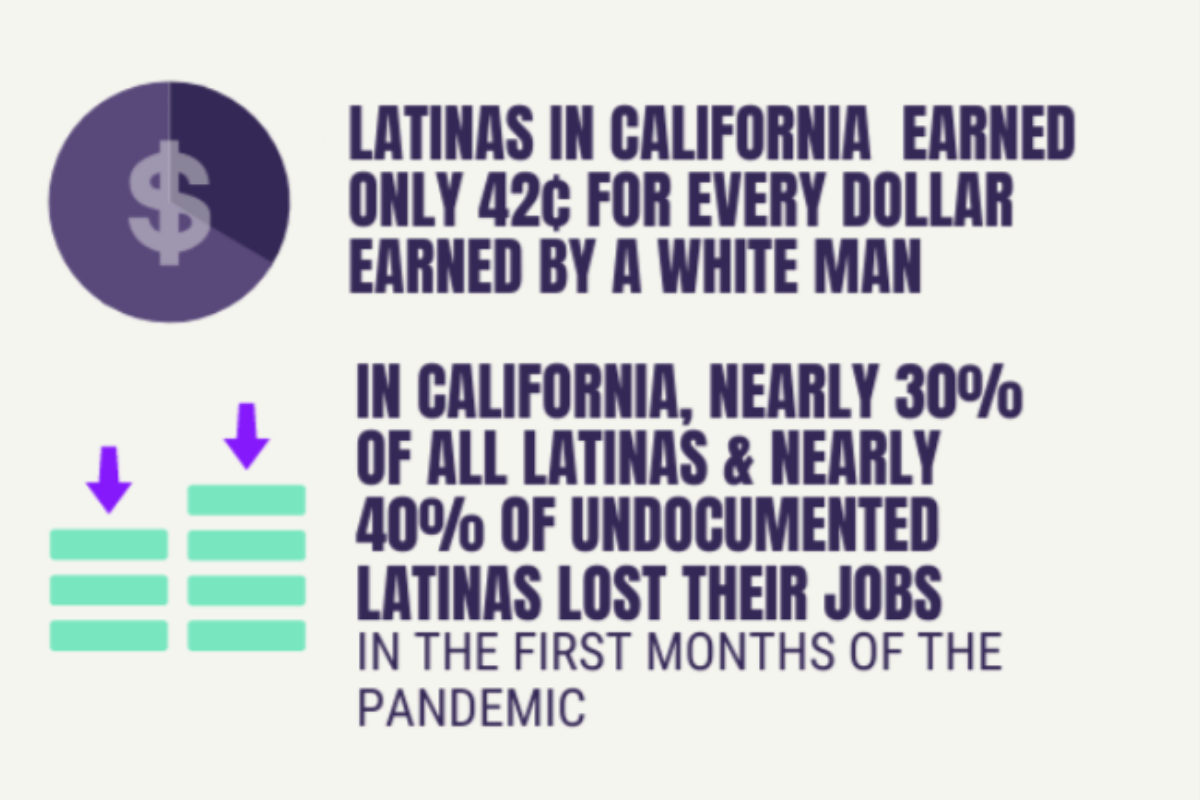

A new report released Thursday by Hispanas Organized for Political Equality (HOPE) noted that “while many Latinas found success during California’s sustained economic growth over the decade since the 2008 recession, as a group, Latinas remain vulnerable to economic downturns,” according to a release.
“Latinas have been disproportionately impacted by the COVID-19 pandemic both in health and work, highlighting the systemic racism that holds our communities back,” said Helen Torres, executive director of HOPE. “While Latinas remain resilient, policymakers must implement policies and support programs to advance Latinas’ economic recovery and eliminate inequalities, for example Latinas’ pay gap.”
The findings from the Economic Status of Latinas Report: Increasing Opportunity in Education to Address Barriers to Economic Prosperity include the following:
- The number of Latinos in the U.S. rose to 60.1 million in 2019, or 18.3% of the country’s total population, compared to 60.4% non-Hispanic whites. By 2060, the Latino population is projected to increase to 111 million, or 27% of the total U.S. population.
- 86% of Latinas in California graduated from high school in the 2018-19 academic year, however, despite being eligible, too few Latina students are being admitted to and enrolling in UC and CSU system institutions. Even with these barriers, 63% of Latina high school graduates enrolled in college in 2018.
- Latinas in California were paid only 42 cents for every dollar earned by a White man in 2019, the most significant wage gap in the nation, a persistent trend for well over a decade.
- Latinas created 2.3 million new firms nationwide at nearly double the rate for all women-owned businesses, representing 18% of all women-owned businesses between 2014 and 2019.
The report also shared several policy recommendations:
- Districts must provide tailored and targeted supports for the academic achievement of English Learners (EL), Foster Youth and Low Incomes Students, of which Latino students comprise the majority of each category.
- Expand access to student support services such as AVID where California participants are 70% Latino and 91% of participants have completed 4-year college degree requirements. Increase a variety of student achievement and supportive programs such as academic counseling, access to a wide selection of AP Courses and Concurrent Enrollment programs to ensure Latino students have access and succeed in settings to streamline college access, bolster earlier college credit attainment, and lessen financial considerations of college level course.
- Advocate for higher institutions to replace these exams with equitable standards including GPAs as consideration for admissions.
- Financially expand the capacities of the UC, CSU, and California Community Colleges to meet the needs of more students.
- Diversify faculty in higher education institutions to reflect the growing number of Latina students.
- California Department of Education and local education agencies should remain diligent in ensuring students have access to intern services and computers for low income families.
- To pass a stimulus package that includes economic relief to state governments to minimize budget cuts to the UC and CSU systems and expand access to federal student aid such as Pell Grant and Work Study programs to UC/CSU students.
- Support the economic recovery of Californians by urging banks and California’s local and state governments to support and fund organizations that provide increased amounts of grants and loans to microbusiness owners.
- The California State Legislature should fund a third-party public study of the Latina Pay Gap to present recommendations to the Legislature and relevant stakeholders.
- Congress should pass healthcare insurance options that would decrease the number of uninsured Latinos.
- Encourage business and civic sectors to prioritize representation within their leadership ranks.
“The report backs up the lived experiences of systemic barriers and economic challenges that have kept Latinas from flourishing. HOPE has given us a glimpse of the many hurdles Latinas are still facing and a roadmap to ensure a more equitable future,” said research author, Dr. Elsa Macias.
The full report is below:


